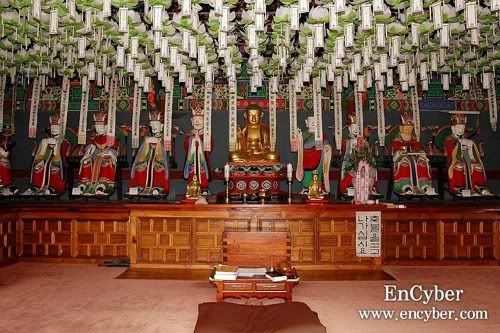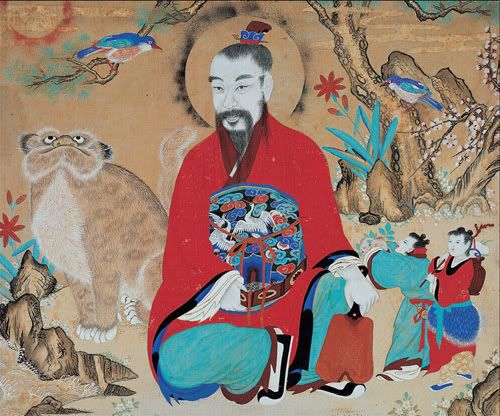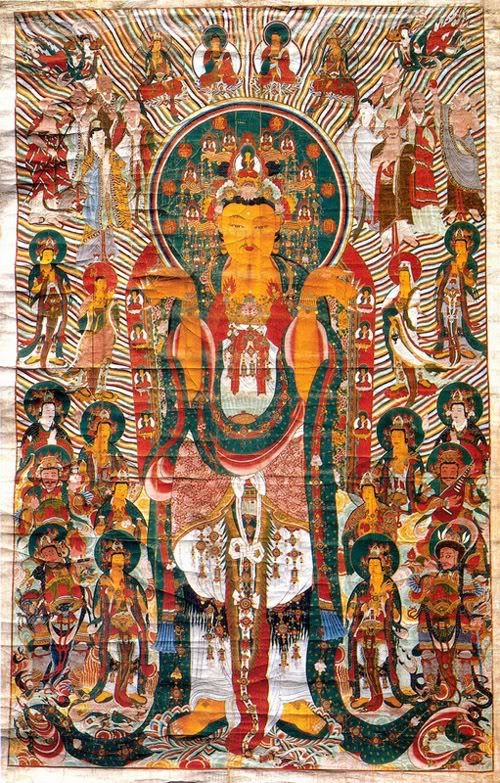Shinwonsa (신원사): Korean Temple Series, Mushroom Cults, and National Treasure No. 299
Continuing on from this entry, the next site one encounters on Dobongsan after Daewonsa is the complex at Shinwonsa. As with all of the other temples that I've written about from this particular trip, Shinwonsa shares its name with a more popular temple to the south, this one located in Chungcheongnam-do. In Hanja the temple's name is 新元寺, which can be interpreted in a couple of ways; the most likely to me is New Head Temple but feel free to correct me if a better translation is available.
Oddly enough, while I was looking up information on the temple I came across this site (Korean Temple Online), which includes all of my Shinwonsa photos from Flickr. There's no text to go with them, so I have no idea why those particular images were chosen. Anyway, photos from the snowy 선날 holiday:






It looks like the temple's Buddha has seen better days. Not only has the hand come off from the statue, but the thumb has also been separated from the rest of the hand. Also worth noting are the two figures in the second row. Known as dol hareubang (돌 하르방; stone grandfather), these stone figures are made from basalt (volcanic rock) and trace their origins to the island of Jeju-do. To quote Wikipedia:
There are three main theories as to the origin of dol hareubangs; either that they were introduced by visitors from the sea, that they are a counterpart to the jangseungs (totem poles) of mainland Korea, or that they spread with shamanic mushroom culture. Jangseungs are also called beoksu in southern Korea and this similarity with the name beoksumeori lends credence to the second and third theories.
Halla San has been named in Chinese literature as one of the "Sam Shin San" (삼신산/ 三神山), or one of the Three Spirit Mountains. Each of these mountains are considered gateways to the spirit world, and have the Amanita Muscaria growing in abundance. This mushroom is well known by the Siberians and is a possible origin for the Stone Grandfather.
I've also seen dol hareubangs placed at Hoamsa, presumably by local residents who vacationed to Jeju-do and thought to bring back a souvenir capable of offering protection to their temple. I'm curious how many of the 'magic mushrooms' can still be found on Hallasan, a volcano located on Jeju Island. The area beneath the standing Buddha in the bottom row also had two other figures partially buried in the snow, but that photo didn't come out as well as I'd hoped.
As mentioned above, the other Shinwonsa temple is located in Chuncheongnam-do, near the city of Gongju. Gongju (공주) was formerly known as Ungjin and served as the capital of the Baekje Kingdom. (One of these days I need to make a post about the Baekje and Gaya.) This second Shinwonsa was constructed by the monk Bodeokhwasang in 651 and this page suggests that the temple was originally called Shinjungsa until 1866. You can find a quick overview of the temple from the Gongju City website, information on the gwaebul - large, outdoor Buddhist paintings - designated as National Treasure No. 299 is available here, and a nice photo gallery is available through EnCyber.
For a little extra reading, the Cultural Heritage Administration newsletter from Summer 2008 features a short, introductory article on gwaebul ("Potpourri"), and Kimberly Hogg in Daejeon has an awesome guide describing her trip to the area and other things to do there.

Temple Buddhas. Image from EnCyber

Mountain Spirit. Image from the Cultural Heritage Administration / Buddhist Cultural Properties Research Institute

National Treasure No. 299. Image from Cultural Properties Administration
.